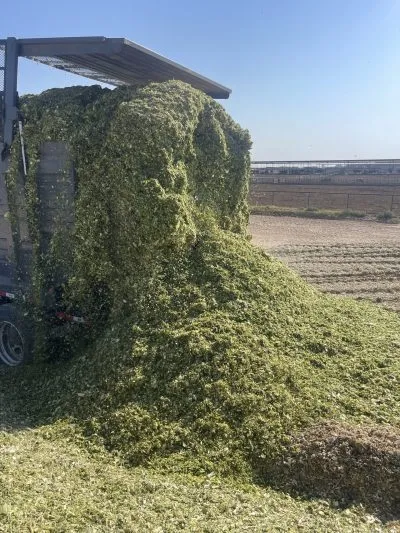Revelations About Lower Starch Digestibility in Silage
Studies show that that ensiled grain have greater starch digestibility than unfermented grains. Now we know why, and what to do about it.

Why does ensiled grain have greater starch digestibility than unfermented grains?
The answer is complicated but revolves around starch degradation during fermentation. Here’s what we know.
Researchers have observed the hydrophobic protein matrix that surrounds corn starch being degraded during silage fermentation. This protein matrix acts as a physical limitation for starch degradation in the rumen, and therefore, when it is degraded or “loosed,” ruminal bacteria have a greater access to starch to digest it.
Many university studies show a positive relationship between storage length of the silage and starch digestibility, meaning that silages stored for longer have a greater starch digestibility in general. This phenomenon is commonly observed in whole-plant corn silage, fractioned corn silage and high-moisture corn.
Daily decisions matter
Now that we know the technical explanation of what we see in the field. Let’s talk about how that impacts our daily decisions.
Ammonia-N management
Wilted silages (or haylages) usually have low starch concentrations. Legumes like alfalfa do not accumulate starch in grains and cereals like wheat and triticale are usually cut before filling grain stage. Therefore, ammonia-N concentrations in those silages are usually related to undesirable fermentation activity. In fact, clostridium fermentation is a source of ammonia-N in silages, therefore, when ammonia-N concentration is elevated (> 10.0% of CP) in haylages in conjunction with eminent butyric acid concentration (>0.5% of DM), it is a clear sign of undesirable clostridia fermentation.
However, in corn silages and high-moisture corn, ammonia-N concentration can be used as a marker of good starch digestibility. Degradation of the discussed protein matrix releases ammonia-N, and it’s more common to see concentrations above 10% of the CP in long-stored corn silages and HMC. Be careful if you observe high butyric acid and/or high ammonia-N values in corn silages with low starch concentration.
Ration adjustment
When changing corn silage piles, testing starch digestibility is always a good idea. You can be in a spot where you have a pile from last year “stored” for 300 days and change for a brand-new pile that is stored for less than 90 days. Evidently those can be very different crops but, if similar, the difference in starch digestibility alone can impair your animal’s performance.
If you need more information, click HERE or contact a silage specialist HERE.


